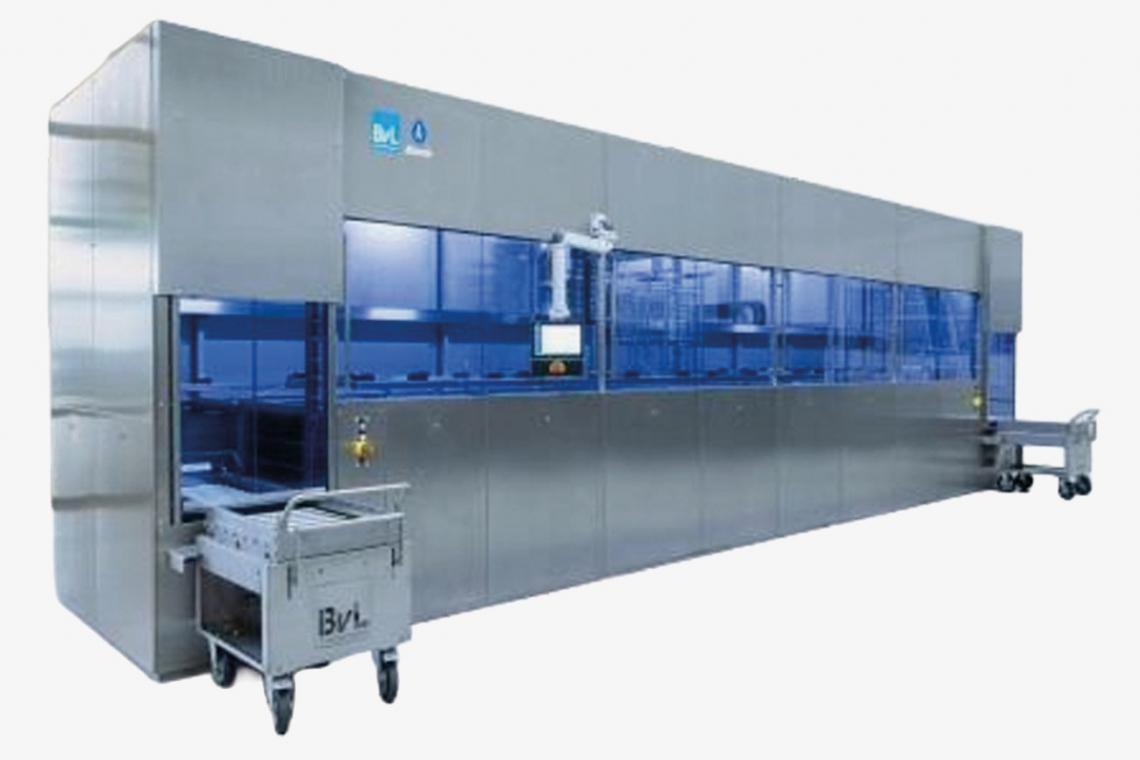The supplier industry for semiconductor production requires cleaning systems for manufactured special components whose cleaning results must meet high standards. As a manufacturer of such cleaning systems, BvL Oberflächentechnik has tested the cleaning performance of the Atlantic immersion cleaning system in a series of tests in its own technical center. The aim was to provide evidence of particulate and molecular cleaning, at least at the grade 2 level typical for ultra-high vacuum applications.
In the test, components with complex geometries made of titanium and aluminum were cleaned, which included capillaries and undercuts. The test results showed that the system guarantees a stable, safe and effective cleaning process.
The cleaning system in the technical center has nine process stations, including seven cleaning and two drying basins. The cleaning process includes ultrasonic cleaning using an ultrasonic module with 40 and 75 kHz, HEPA H13-filtered hot air and vacuum drying, ultra-fine filtration, continuous pH and conductivity monitoring and freely programmable cleaning sequences. The cleaning process itself takes place in cleaning baths prepared with fully demineralized water - both alkaline and acidic. The subsequent rinsing processes are crucial for high-purity applications. They are carried out with city water and ultra-pure water (UPW). The UPW used is provided by an ultrapure water treatment system. This is equipped with components such as particle filtration, softening, reverse osmosis, UV sterilization, ion exchange, nano-ultrafiltration and a TOC (Total Organic Carbon) measuring module. With a treatment capacity of 300 l/h, excellent water values are achieved:
- Conductance: 0.06 µS/cm
- TOC value: 13.58 ppb
- Initial visual inspections are carried out in the dark room before and after cleaning. The components are examined for particles and stains using UV and bright light. The results are then determined and documented in the laboratory:
- Particle purity (PMC) - Target: Grade 1
- ≥ 0.5 μm: 650,000 particles/m² (limit value: 2,000,000)
- ≥ 5.0 μm: 17,000 particles/m² (limit value: 20,000)
- ≥ 10.0 μm: 0 particles/m² (limit value: 1 000)
Outgassing rates for residual gas analysis (RGA) - Target: Grade 2
- H2O: 2.71E-4 mbar-l/s
- CₓHᵧ v: 2.53E-7 mbar-l/s
- CₓHᵧ nv: 2.80E-8 mbar-l/s
The desired atomic percentage loads on HIO (Hydrogen Induced Outgasing) elements and elemental surface contamination could also be achieved in the cleaning process.
For even more complex component geometries, BvL uses another process in basket cleaning systems for industrial ultra-fine cleaning - vacuum impulse technology. The pressure change process improves media exchange and dirt removal even in structures that are difficult to access.


